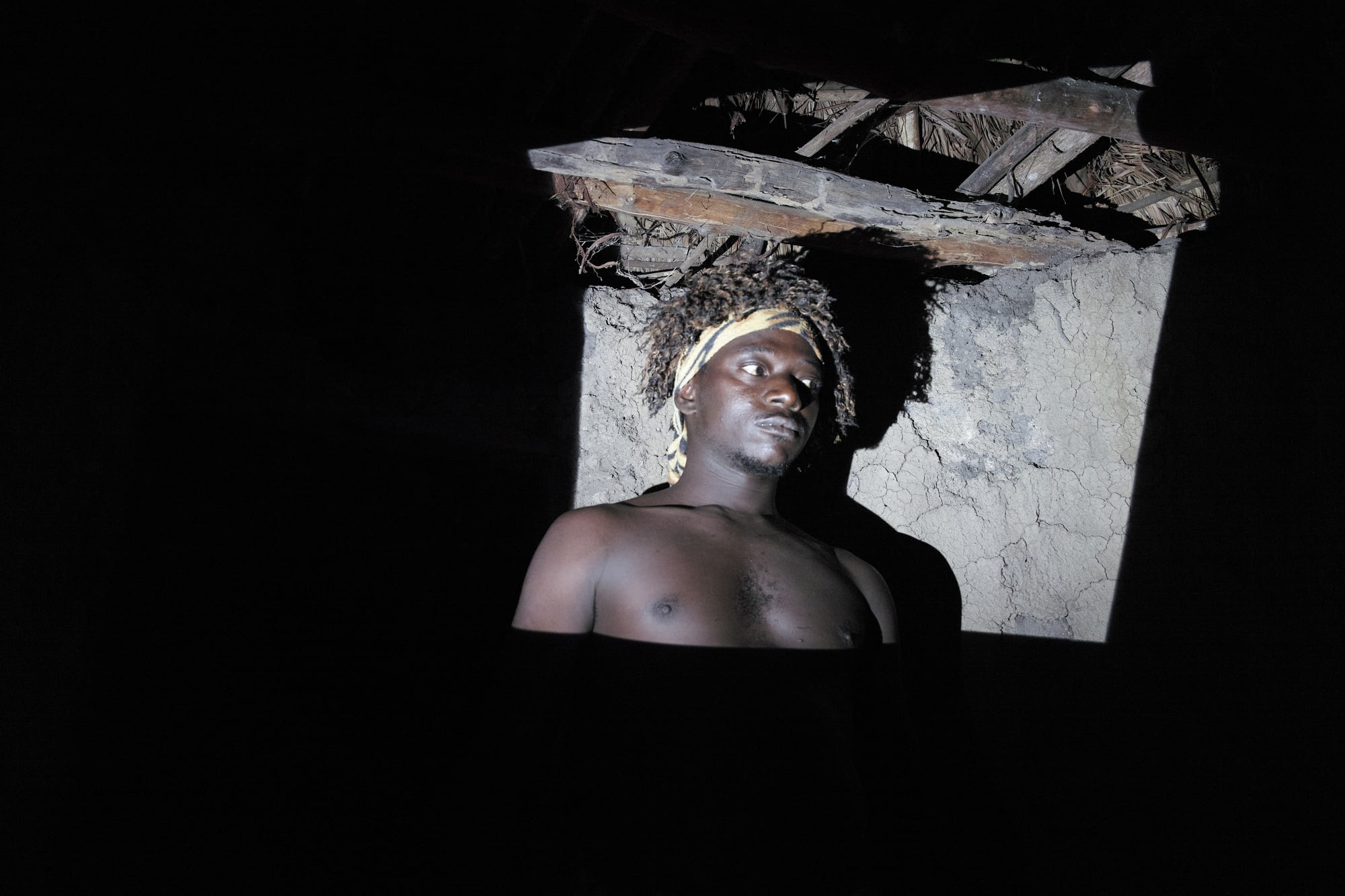
In the winter of 2013 I went to Guinea with a few friends. Guinea is one of my favourite destinations, since Silvia, the mother of my friend Christoph, is working there at a medical laboratory. And having nice people on the ground makes travelling to a foreign country much more enjoyable.
Guinea is an interesting country to visit. It is rich in natural resources, which leads to wealth being concentrated in the hands of a few powerful families. It also means that tourism is non-existent and the only white people present are professionals working at mining companies and NGOs. You can be the only white person in a densely populated area, and you get eyed on the streets - it feels like everything you do would be talked about later, so you end up being not only a guest but also an ambassador for your culture.
I went there with a tiny project of my own - I thought of combining the rich colours and textures of a country - a country where no straight line could be found anywhere, not even in architecture - with perfect geometrical shapes and muted colours that I would bring with me. Such juxtaposition could create some visual tension and - who knows - even invite the viewers to think about what it means to be a European visitor in Africa, about postcolonialism and the visual expectations of western civilization.
The plan was to bring a cube made of metal and cloth with me, a cube that I would place in the scenery - sometimes half hidden and sometimes central to the view. I would make photographs of it as if it were a foreign body, that may or may not devour its surroundings.
Bringing a large enough cube turned out problematic for practical reasons. Instead, I built a flash projector that would project an image on the scenery just in the moment of making a photo. It would have some additional subtext of the photographer actively appropriating what they see. I researched some geometrical forms, trying to imagine where the balance would lie between giving shape and being ornate, and decided to go with squares - a black and a white one. I printed the slides and went to Guinea.
Artistically, it didn’t work out. It had much more of an exploration of three-dimensional space aspect to it than anticipated.
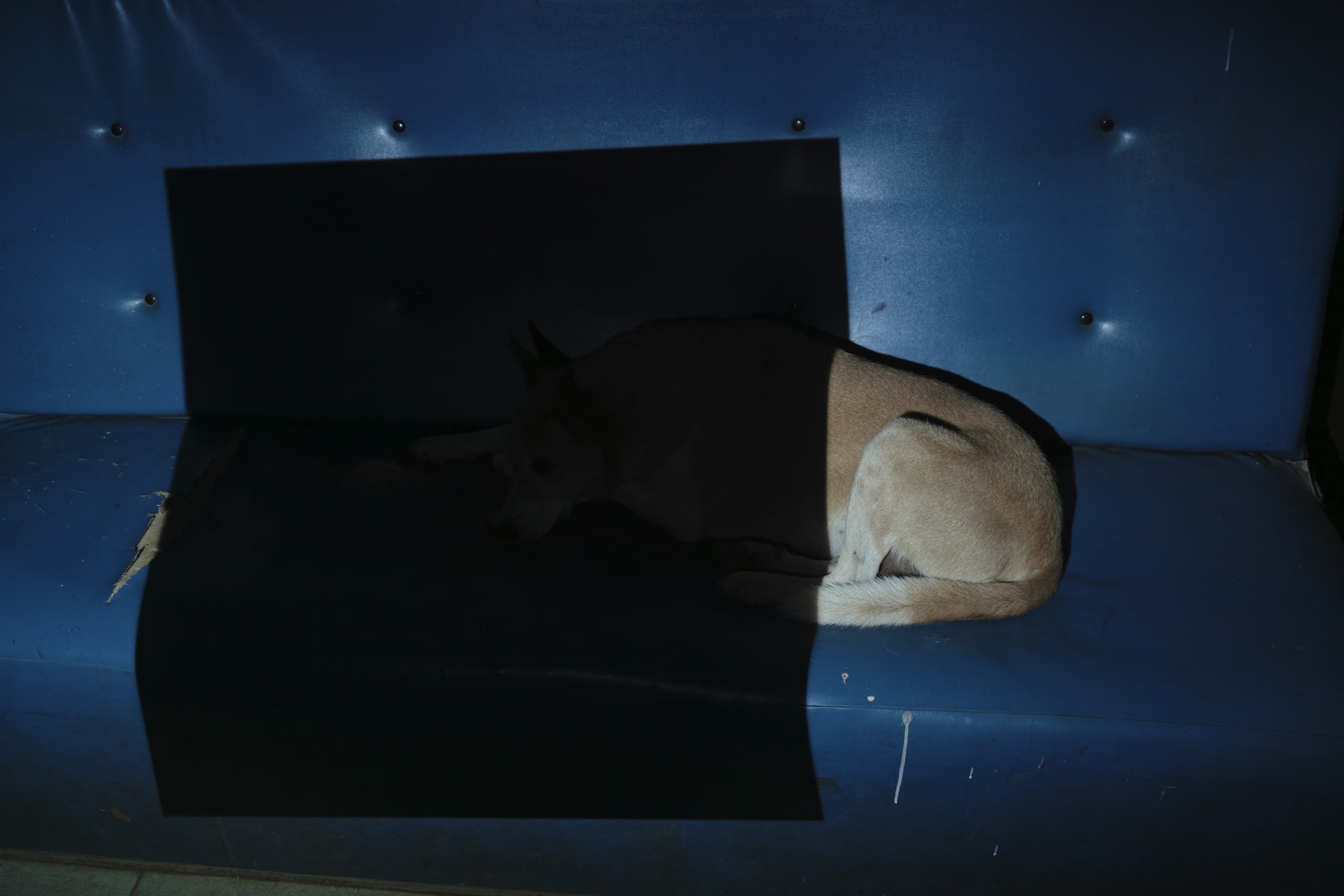
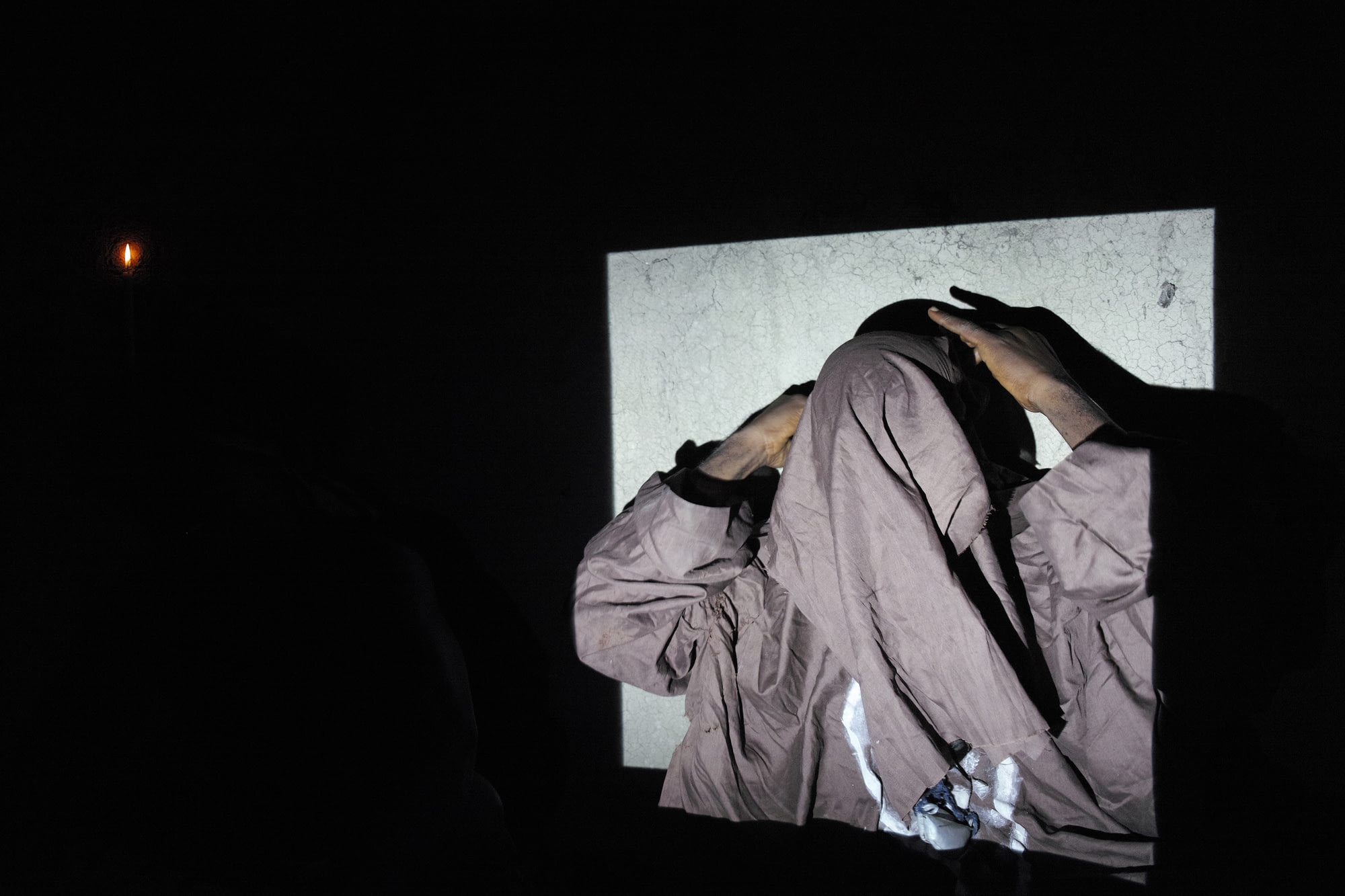
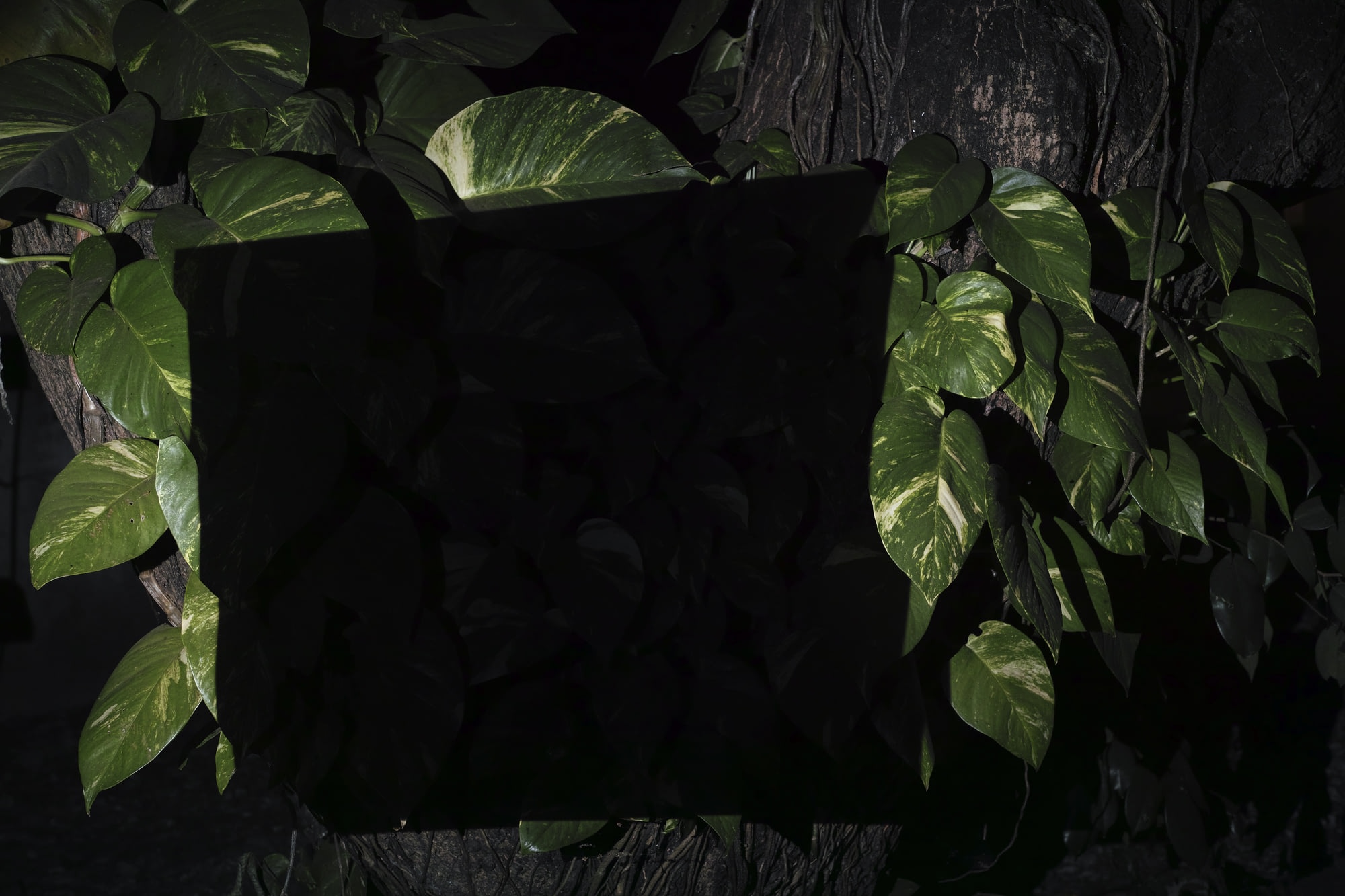
In 2013 we stayed in a new place, since a friend of Silvia left the country and she was taking care of his big house in the Kakimbo district - a home with an old mango tree in the yard that would give you shade in hot and humid afternoons. As you drive up to this place, you drive by the Kakimbo forest, which is surrounded by large concrete walls. The Kakimbo forest is one of the few places that offers a bit of wilderness in the city. Idle railroad tracks, built by the soviets to transport mined bauxite to the port, run next to the forest, leaving no gap between the wilderness and industrial wasteland. The concrete walls around the Kakimbo forest are full of poems and drawings, drawn with the limited palette of white chalk. It was there that I found the cubes.
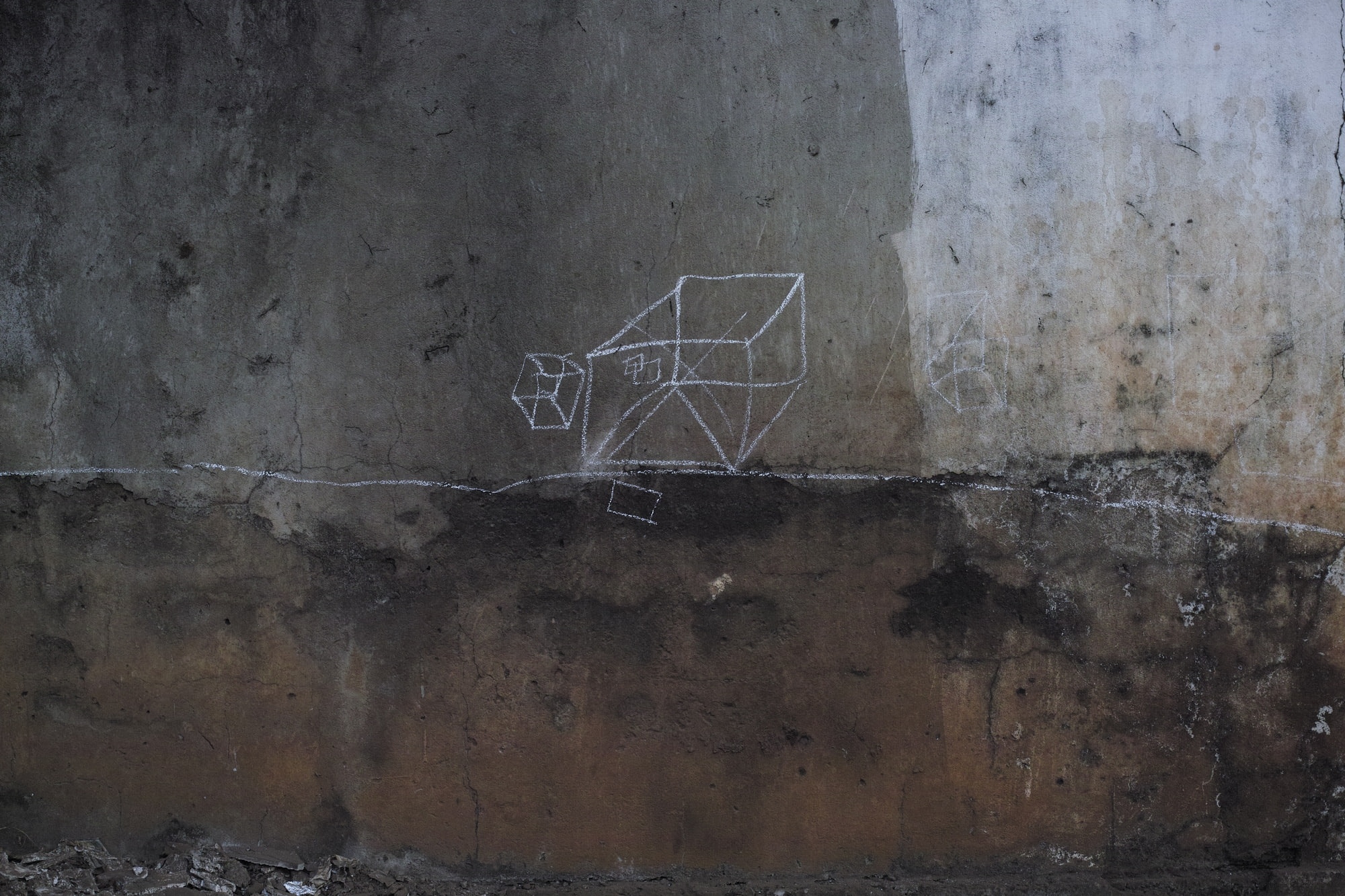
Someone drew the cubes, dozens of cubes on the surrounding walls, failing at most of their attempts. It was as if they were desperately trying to grasp the dimensions of the real world. The real world stood right next to them - an old impoverished lady with a plastic bucket. I asked her for a photograph, offering to pay for a plate of rice in return, and she agreed.
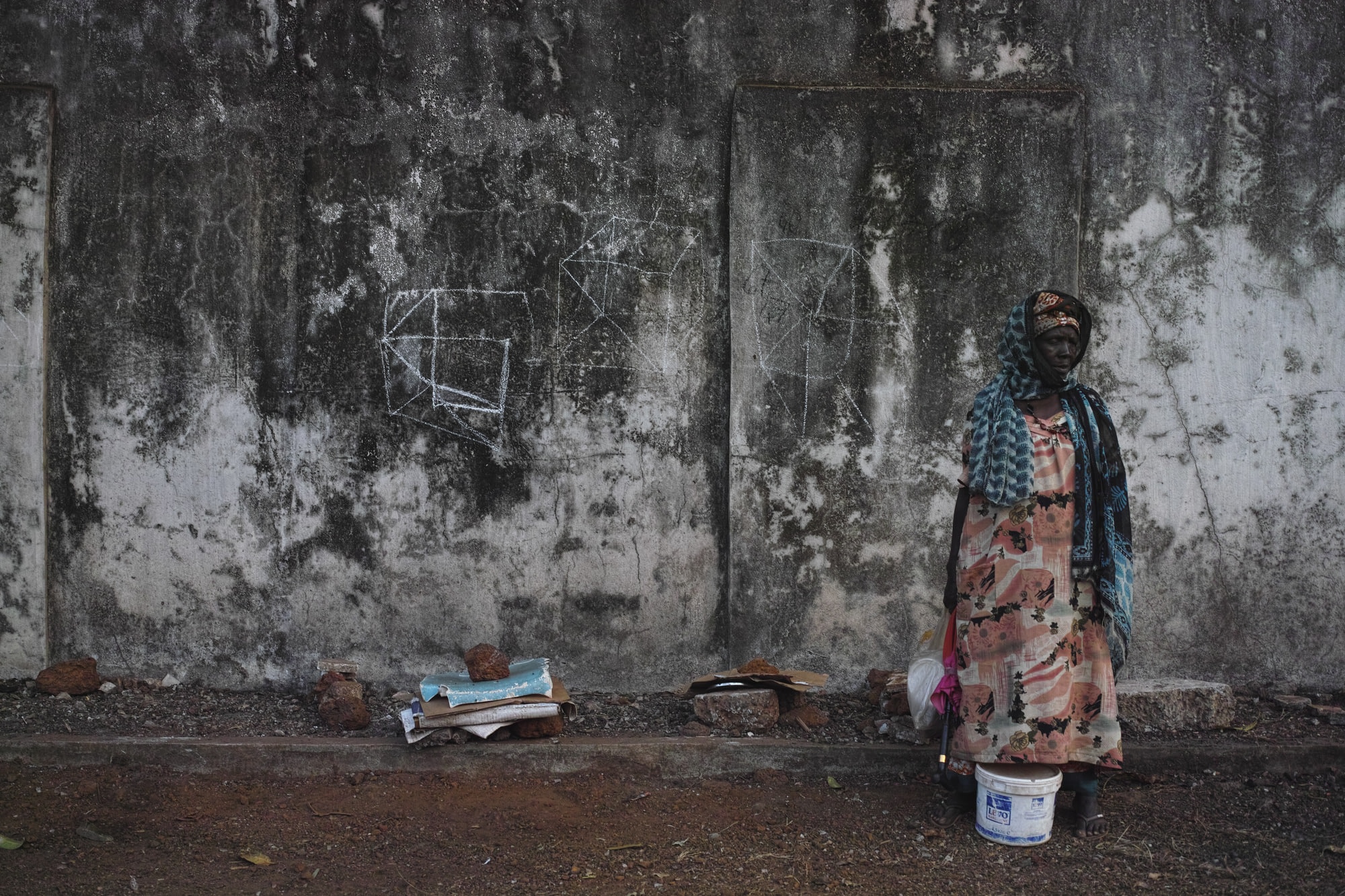
This was not the Afrocubism I was looking for. It was much more than I could have imagined.
As for the clear geometrical structures in wild African landscapes - artists like Kiluanji Kia Henda from Angola have it covered.
